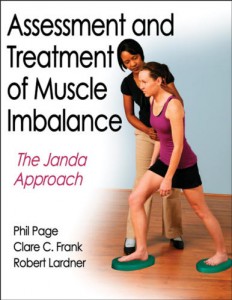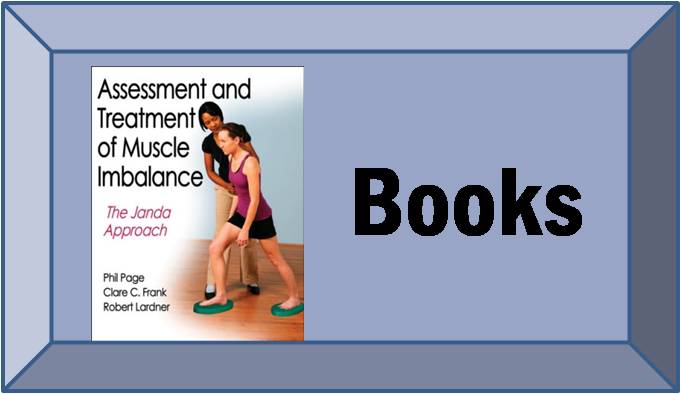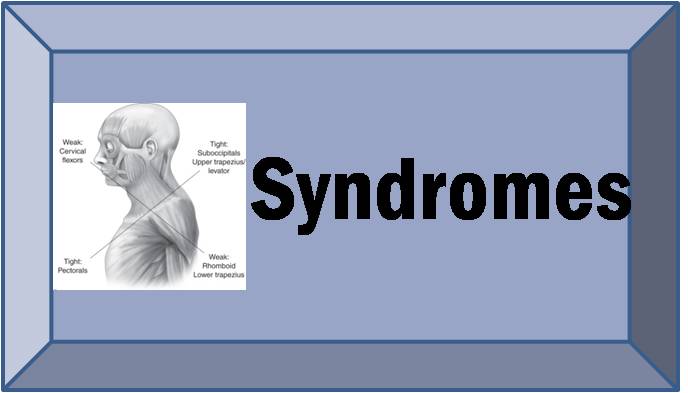Free excerpt from Assessment and Treatment of Muscle Imbalance: The Janda Approach
 Muscle Length Assessment Technique
Muscle Length Assessment Technique
Muscle length testing involves elongating the muscle in the direction opposite of its action while assessing its resistance to passive lengthening. Precise testing requires that one of the bony attachments of the muscle (usually the origin) be in a fixed position while the other bony attachment is moved passively in the direction of lengthening the muscle. In other words, muscle length testing assesses the resistance to passive movement. This is in contrast to typical flexibility or ROM testing. The actual ROM can be measured for documentation purposes, but it gives limited clinical information in muscle imbalance syndromes. The most valuable clinical information is the muscular end feel and the location of the ROM end feel. The elongation of the muscle should be performed slowly to avoid eliciting a quick stretch of the muscle spindle and subsequently inducing a twitch response and muscle contraction. In addition, for the best accuracy and precision, muscle length testing should be performed when the patient is not in acute pain in order to avoid pain inhibition and muscle guarding. In summary, there are four steps to assessing muscle length:
1. Ensure maximal lengthening of the muscle from origin to insertion.
2. Firmly stabilize one end (usually the origin).
3. Slowly elongate the muscle.
4. Assess the end feel.
Following are the procedures for testing key muscles. Clinicians do not have to perform muscle length testing on every muscle listed; instead, they should assess the muscles that the postural and movement pattern analysis indicate as being possibly tight. Once tight muscles have been identified, the clinician can establish a muscle imbalance pattern (if present) and begin to look for causes of the tightness. Table 7.1 provides the normal results of muscle length for flexibility testing.
Table 7.1 Normal Results of Muscles Tested for Length |
|
| Muscle | Normal ranges or end feel |
| Iliopsoas | 0° hip extension, 10° with overpressure |
| Rectus femoris | 90° knee extension, 125° with overpressure |
| TFL-IT band | 0° hip abduction (neutral), 15°-20° with overpressure |
| Adductors | 0° hip abduction (neutral), 20°-25° with overpressure in the modified Thomas test position 45° hip abduction in supine position |
| Hamstrings | 80° hip flexion with contralateral leg extended 90° hip flexion with contralateral leg flexed |
| Triceps surae | 0° ankle dorsiflexion |
| Quadratus lumborum | Thoracolumbar curve should be smooth and gradual |
| Piriformis | Gradual soft end feel |
| Upper trapezius | Gradual soft end feel |
| Levator scapulae | Gradual soft end feel |
| SCM | Gradual soft end feel |
| Pectoralis major | Sternal portion (lower fibers): with shoulder abducted at 150°, arm should be horizontal to table and 15°-20° with overpressure Sternal portion (midfibers): with shoulder abducted to 90°, arm should be horizontal to table and 30° with overpressure Clavicular portion: with shoulder abducted to 60°, arm should hang freely over table |
| Paraspinals | Schober’s test: excursion of >2.4 in. (6 cm) |












